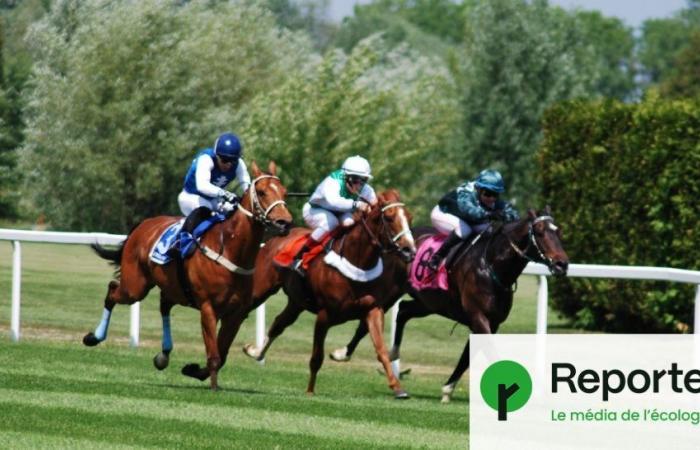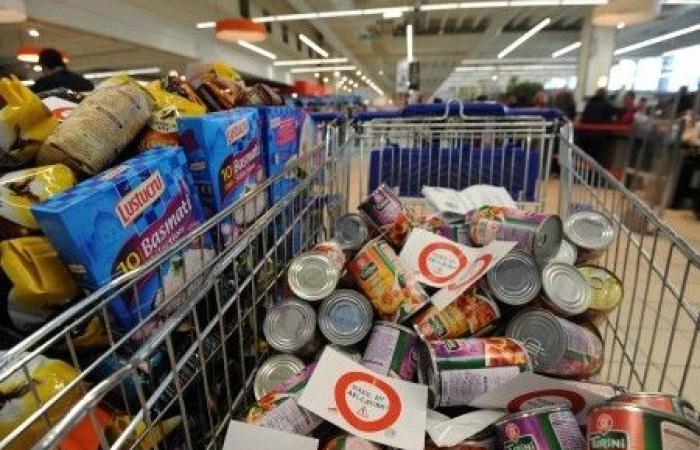Do racehorses end up on our plates? ? This is one of the questions raised by the investigation Horses — Making a Killing (Horses, the Making of a Kill) by investigative journalist Conor Ryan, broadcast on June 12 and 13 by Irish public television in the show RTÉ Investigates.
Foodwatch, a consumer advocacy organization, has been working on the issue of food fraud for years. Ingrid Kragl, its information director, reveals the revelations of this documentary and points out the flaws in European regulations.
Reporterre — Irish television warns in a documentary about a new food scandal linked to horse meat. What journalist Conor Ryan’s investigation reveals ?
Ingrid Kragl — In this investigation, the investigative journalist reveals that there is indeed horse meat trafficking. Unfit for consumption, this meat nevertheless enters the food chain [n’étant pas destinée à la boucherie, elle n’a pas été soumise aux mêmes contrôles sanitaires et peut contenir des antibiotiques, des virus, etc.]. And this trafficking is not small, this cross-border fraud concerns several European countries, including France. Since the scandal that we called “ horse meat lasagna » which broke out at the beginning of 2013 – and which had already come from revelations from the Irish authorities – we thought that there was no longer a problem. This documentary demonstrates the opposite.
Conor Ryan was able to film with a hidden camera in the only Irish slaughterhouse that slaughters horses, which then leave for the European continent. Because you should know that in Ireland, we don’t eat horse. Culturally, it’s practically a taboo. In France, on the other hand, 5 % of the population still consumes it.
“ Racehorses are treated with powerful anti-inflammatories »
In Ireland, the culture is very anchored around racehorses. However, when the latter are no longer good for anything, it costs a lot to get rid of them. Well-organized criminal networks then confuse the traceability of horses through the use of imported electronic chips. This is truly cross-border trafficking with blurring of the trail with passports. Result: these racehorses enter slaughterhouses and the food chain with the risk of ending up in supermarket trays, in our refrigerators or in butcher shops.
To what extent is France affected by this trafficking? ?
Huge quantities of horse meat leave Ireland for France. According to official figures from France Agrimer, in 2023, around 400 tonnes were imported from Ireland, the equivalent of 1.6 million 250 gram steaks.
With this documentary which shows the shenanigans regarding the identity, chips and passports of horses, we realize that we cannot have confidence in the traceability, quality and health safety of this meat. Where were the tonnes of unfit meat sold and by whom? ? Perhaps Irish meat only passed through France. We do not know.
“ There is no follow-up, no sanction. It all remains very opaque. »
Pxhere/CC0
Be careful, we are not saying that all meat is rotten or that this meat is being passed off to us by passing it off as beef. ! It is said that there is a traceability problem and that consumers at the end of the chain are never informed. You do not see any withdrawal-recall of horse meat in France to my knowledge. However, over the last five years, the European alert network RASFF [Système d’alerte rapide pour les denrées alimentaires et les aliments pour animaux] has raised nearly 200 reports concerning problems with the identification or passports of horses entering the European market. Each time, several countries were involved.
What are the types of possible risks ? What do you recommend ?
Racing horses are treated with powerful anti-inflammatories, for example. I’m not saying there is an imminent health danger. What I’m saying is that organized, cross-border criminal networks still have an interest in blurring identities, potentially exposing consumers to risk, and we are not informed about it. We have a problem with transparency.
Certainly, there were new regulations in 2015, then in 2021 to regulate and oblige, particularly at the national level, to have databases, to be very transparent and to try to improve this traceability of meat. There was really an intention to tighten the screws after the lasagna scandal. European authorities have asked Member States to carry out monitoring, control, etc. Unfortunately – and this is what the documentary reveals – the account is not there.
Why doesn’t it work in all European countries? ? Because we lack manpower for health checks. We rely too much on self-control and self-regulation. There is no follow-up, no sanction. It all remains very opaque. Finally, it is “ not seen not caught» and as long as everyone ignores the problem, nothing will happen. We at Foodwatch are convinced that transparency, on the contrary, works to put an end to impunity.







